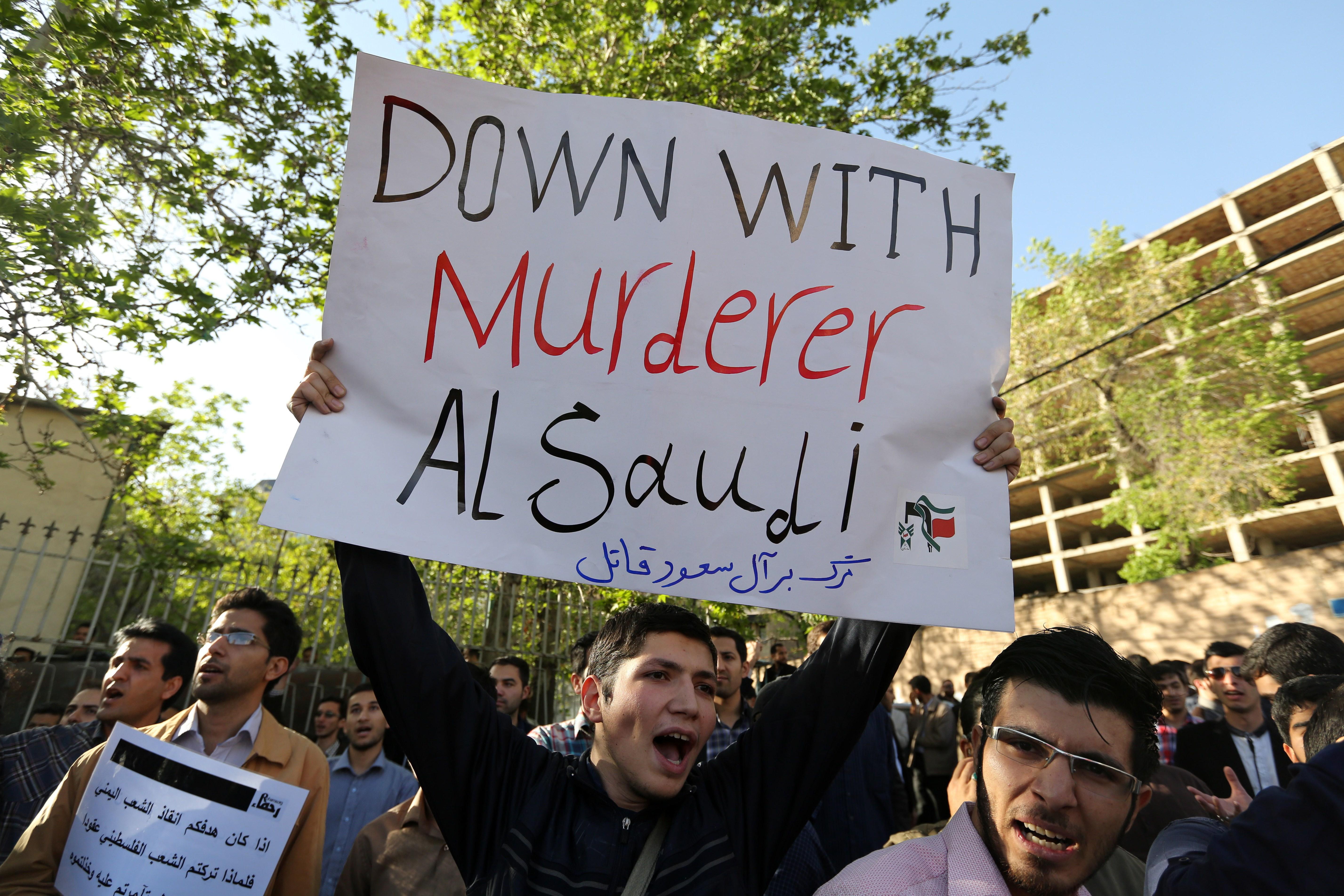Iranian citizens are pretty isolated from their country’s main global enemies, the United States and Israel. But they are much less cut off from Iran’s regional rival Saudi Arabia, because Saudi Arabia is home to Islam’s holiest sites. About 100,000 Iranians visit Saudi Arabia every year for the annual hajj pilgrimage, and about 500,000 make the trip for the umrah, or “lesser pilgrimage,” to Mecca.
But this week Iranians have been barred by their government from visiting the land of Muhammad. The suspension is a response to the alleged sexual assault of two young Iranian men by Saudi security forces at the Jeddah airport. The details of the incident are still under wraps, but it was enough to spark protests outside the Saudi embassy in Tehran over the weekend and prompted the culture ministry to announce on Monday that umrah pilgrimages, which are encouraged but optional for Muslims, will be suspended until the perpetrators are brought to justice. (Iran has suspended pilgrimages on a few previous occasions, including in 1943 after an Iranian citizen was beheaded for vomiting while circling the Kabaa and in 1987 when about 400 pilgrims, mostly Iranians, were killed in clashes with Saudi security forces after launching an anti-U.S. demonstration.)
It’s pretty clear this breakdown has less to do with a murky and mysterious alleged sexual assault than with the worsening proxy war in Yemen. Saudi Arabia believes that the Shiite Houthi rebels who took over Yemen’s capital earlier this year represent an Iranian incursion on the Arabian Peninsula. The general consensus among U.S. experts is that the Houthis are receiving funding from Iran but aren’t under its direct control.
A coalition of Gulf countries led by Saudi Arabia started a bombing campaign against the Houthis in late March, demanding the reinstatement of ousted President Abed Rabbo Mansour Hadi, which Iran’s supreme leader Ayatollah Ali Khamenei denounced as a “genocide.” Iran has demanded that Saudi Arabia pull back from Yemen, to which the Saudis scoffed that Iran should pull back first. Hadi, currently in exile in Riyadh, took to the New York Times this weekend to argue that the Houthis’ “campaign of horror and destruction is fueled by the political and military support of an Iranian regime obsessed with regional domination.”
The Saudis are likely becoming irritated that allies don’t seem to share their level of alarm over the Houthi takeover. The Obama administration certainly isn’t thrilled that a reliably pro-American government has been overthrown by an Iranian-backed movement whose official slogan, now plastered all over the Yemeni capital, is “God is great, death to America, death to Israel, damn the Jews, victory for Islam.” But America’s main focus is still on the Houthis’ sworn enemies, al-Qaida, and while Washington has been providing support for the Saudi effort, U.S. officials have been going out of their way to make clear that they’re skeptical about what the bombing can accomplish.
The U.S. hesitation can only exacerbate Saudi (and Israeli) concerns, related to the recently announced nuclear agreement, that the U.S. is increasingly willing to work tacitly with Iran to defeat Sunni extremist groups like al-Qaida and ISIS. The Saudi government was mildly supportive of the deal, at least in public, though some other recent moves suggest it wants to be ready to ramp up a nuclear program of its own if Iran’s can’t be stopped.
Tensions between the Kingdom and the Islamic Republic are at a boil at the moment, and it seems likely that the situation won’t have eased by the beginning of the hajj in late September. But if there’s anything to be thankful for in the current morass of Middle East power politics, it’s that at least for now these two regional rivals are facing off without nuclear weapons.
